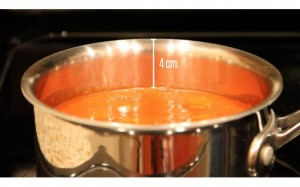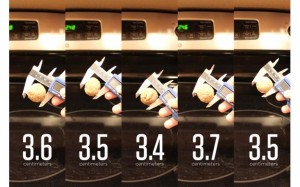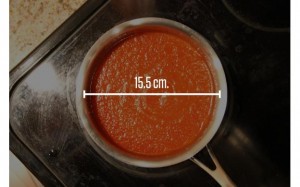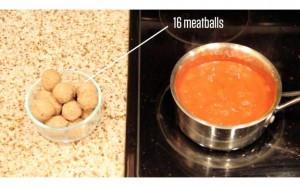The 3-Act Math Task, Meatballs by Dan Meyer, can be found at http://www.101qs.com/2352-meatballs. This activity is ideal for those spaghetti lovers in your classroom. It involves learning how to calculate how many meatballs can be placed in a pot of spaghetti sauce with out causing the sauce to overflow. This can easily relate to the majority of your students, whether they cook the spaghetti and meatballs themselves or they just eat it. This activity allows students to be constantly engaged through a subject of interest, various discussion starter questions, and mini videos.
Act 1 of this task begins with a video of boiling spaghetti sauce that ends with a bowl of meatballs about to be entered into the sauce pot. This is followed with the following discussion starter questions:
1. How many meatballs will it take to overflow?
2. What is a number of meatballs you know is too high?
3. What is a number of meatballs you know is too low?
This allows students to be fully aware of their central focus for the day and begin to brainstorm of the answer possibilities.
In act two students are asked what information would be useful to know here? As students begin to answer this question, the teacher will show the students images of the things that would be useful to know to answer the leading question (How many meatballs will it take to overflow?). The images consist of the height remaining in the pot, the diameter of some sample meatballs, the diameter of the pot, and the number of meatballs. During this act the teacher will also either teach or review volume formulas of cylinders and spheres so that they can proceed to the next act. Through this act students begin to think of ways in which they can approach this problem and what information is needed to begin to solve for the solution.
During act three students will use the information collected during act two to calculate the space left in the pot and the volume of the meatballs and predict a number of meatballs that will fill the remaining space or cause the pot to overflow. Once students have made their calculations/predictions, the teacher will show a video of meatballs being placed in the pot one by one until the pot slightly over flows, providing students with the answer to check how close their predictions were.
This task is aligned to CCSS.Math.Content.HSG-MG.A.1: Use geometric shapes, their measures, and their properties to describe objects. This task allows students to compare one shape (cylinder/room remaining in pot) to another (sphere/meatballs), as they are trying to determine how many meatballs fit in the remaining room in the pot. In order to do so students must be taught the volume formulas of these geometric shapes and be able to determine how one shape would fit into the other.
Meatballs is also aligned to CCSS.MATH.PRACTICE.MP4: Model with mathematics. Mathematically proficient students can apply the mathematics they know to solve problems arising in everyday life, society, and the workplace. For this task students used their knowledge of cylinders and spheres to determine how many meatballs they can put in their spaghetti sauce before it overflows. This can be applied by all students in their every day lives and shows students how math is a part of our daily lives and doesn’t only arise in school settings.



